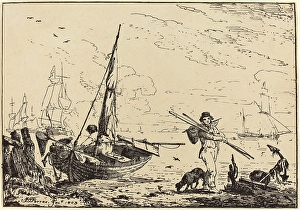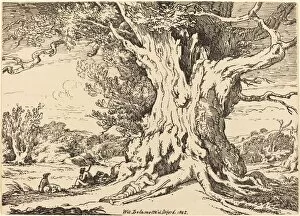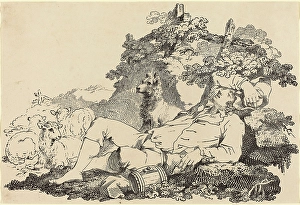Tusche Collection
"Tusche: The Artistic Medium of Choice in 19th Century Lithography" Tusche, a versatile artistic medium, captivated the attention of artists during the 19th century
All Professionally Made to Order for Quick Shipping
"Tusche: The Artistic Medium of Choice in 19th Century Lithography" Tusche, a versatile artistic medium, captivated the attention of artists during the 19th century. Its unique qualities allowed for stunning lithographs that showcased intricate details and captivating scenes. In 1896, tusche crayon scraper became an attraction among artists seeking to push the boundaries of their craft. With skilled hands and meticulous precision, they created lithographs that left viewers in awe. One such masterpiece was Paul Sandby Munn's "Brinkman Priory" from 1812, where pen and tusche lithograph techniques brought life to this architectural gem. Even across continents, tusche found its way into the hands of talented individuals like Benjamin West. His "Angel of the Resurrection" from 1801 beautifully combined pen-and-tusche elements to depict a celestial figure emerging with divine grace. Richard Cooper II's "Landscape with Large Trees" (1802) transported viewers into nature's embrace through his expert use of tusche. The delicate strokes captured every leaf and branch with remarkable accuracy. Marine scenes also came alive thanks to tusche's versatility. John Thomas Serres' "Fishing Boats on Shore, Man with Oars" portrayed a bustling coastal scene filled with energy and movement. William Henry Pyne utilized pen-and-tusche lithography in his depiction of quaint cottages in his work titled "Old Cottages" (1806). This technique added depth and texture to each stroke, bringing these humble dwellings to life before our eyes. James Barry's "Eastern Patriarch" (1803) demonstrated how tusche could capture cultural diversity through its expressive lines and shading techniques. It revealed not only technical skill but also emotional depth within each stroke. Ruined abbeys amidst towering trees were another subject matter that benefited greatly from using tusche as seen in Richard Cooper II's "Ruined Abbey among Trees" (1802).









